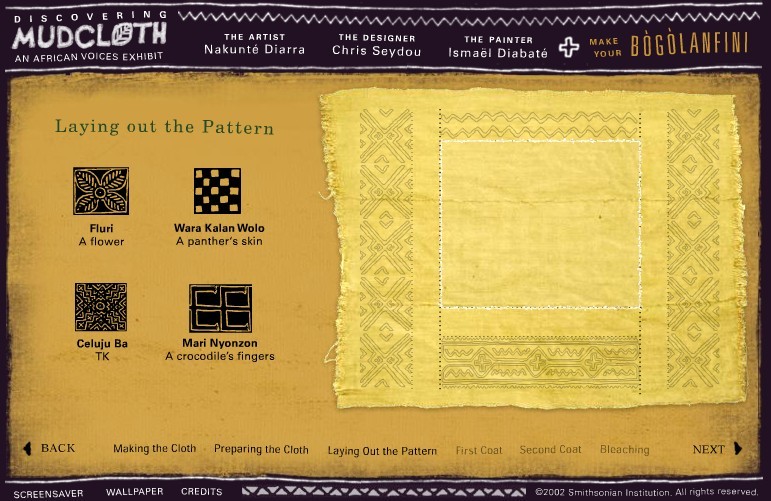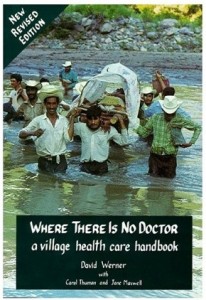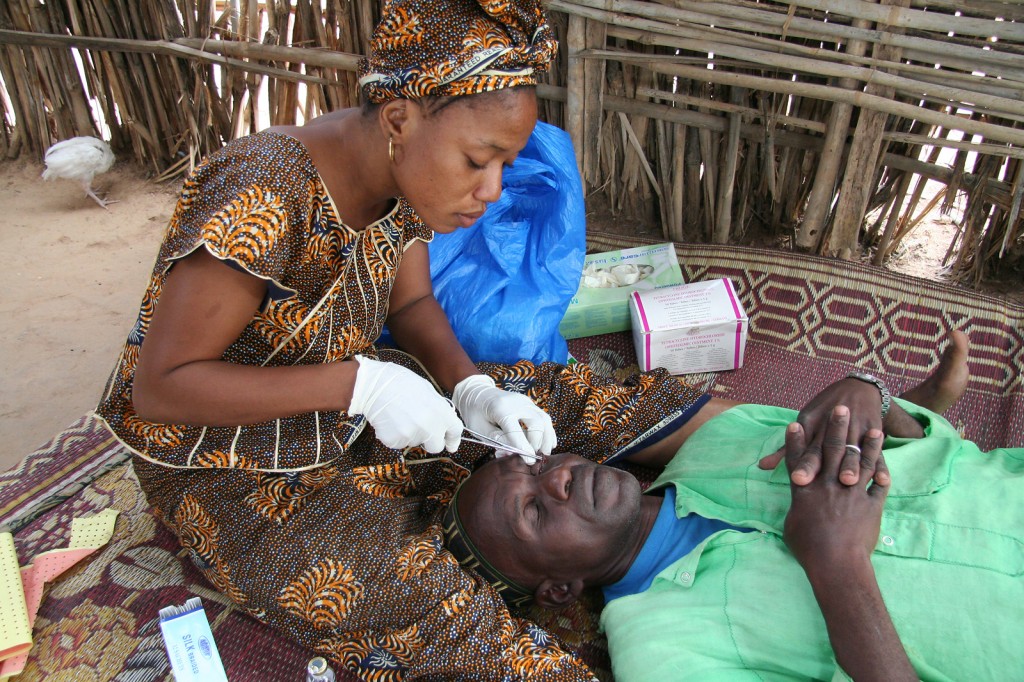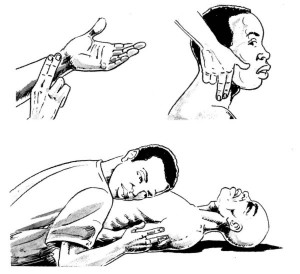At the Smithsonian’s website, you can design your own mudcloth, or bogolanfini, and even print it out. Plus, learn the meaning of different patterns used by traditional artisans. Fun!
Author Archives: Matthew Heberger
Découvrir le projet dokotoro
En 2012, un petit groupe d’amis, la plupart desquels ayant étaient des volontaires au sein du Peace Corps au Mali (en Afrique de l’ouest), ont décidé de s’unir pour traduire le livre Là où il n’y a pas de docteur en bambara, une langue parlée au Mali et dans ces pays environnants. On a décidé d’intituler cette association « le Projet dokotoro » (ou Dokotoro Project en anglais), étant donné que dokotoro veut dire docteur en bambara.
Là où il n’y a pas de docteur est un manuel de médecine générale de 600 pages qui est facile à lire et riche en illustrations, publié par le Hesperian Foundation. Il est écrit principalement pour les agents de santé communautaires et les éducateurs aux pays en voie de développement, où les services de soins de santé sont limités. C’est le manuel de médecine le plus utilisé du monde. Aux États-Unis et dans d’autres pays développés c’est bien connu dans les milieux des volontaires au sein du Peace corps, des travailleurs humanitaires, et des missionnaires.
Friday Party: A free trip to Djenné
Spend five minutes on an excursion to the beautiful city of Djenné, Mali in this documentary called “Hemelse Modder,” or “Heavenly Mud” by Ton van der Lee.
Healthcare Information for All
I recently learned about the global campaign Healthcare Information for All by 2015. The project, launched in Mombasa, Kenya in 2006, has a vision of “a world where people are no longer dying for lack of healthcare knowledge” and is working “to improve the availability and use of healthcare information in developing countries.” Great stuff. The organization is free to join, has over 10,000 members, and hosts several active email message groups.
Recently, HIFA 2015 announced its first SMART goal: Mobile Healthcare Information For All. What does SMART mean? It’s a bit of management jargon that refers to a goal that is specific, measurable, attainable, relevant, and time-bound. Here’s the goal:
By 2015, at least one telecoms provider, in at least one country, will endorse the vision of Healthcare Information For All, and will provide free access to essential healthcare knowledge in the local language, pre-loaded on all new mobile phones they may sell and freely downloadable to all those who already have a mobile phone.
This Goal was proposed and will be led by the HIFA 2012-15 Challenge Working Group, which is specifically concerned with the health information needs of citizens, parents and children, in recognition of the huge (and largely unrealised) potential of mobile phones to meet basic healthcare information needs of citizens, parents and children.
A draft concept note is available on their website, describing how this would work. I think it’s an exciting goal, and one that could really help people in developing countries. Who knows? In a few years from now, maybe anyone in Mali will be able to read Where There is No Doctor on their cell phone… Maybe we can interest Orange or Malitel!
Friday Party: Papa Gaoussou Diarra
For your Friday amusment, some gender-bending song and dance with Malian singer (and comedian?) Papa Gaoussou Diarra.
Amazing to see this on Youtube. This was a huge hit in the summer in Mali in 1996. Everywhere you went, kids would yell out to skinny people, “pekele!” And fat people were “niansanfari.” As far as I know, those were totally made up words.
Join our 2nd Hackathon in Oakland on June 22
If you’ve wanted to get involved with the Dokotoro Project and live in the Bay Area, join us for our second “hackathon“-style work party on Saturday, June 22. We’ll meet at a comfortable office in downtown Oakland, a short walk from the 12th Street BART. The work party is planned from noon to 4 pm, and then we’ll have a barbecue and drinks.
Volunteers with all types of skills are welcome! We’ll be editing and formatting text in English, French, and Bambara, and possibly grant writing and wiki editing.
When: Saturday, June 22, noon to 4 pm
Where: downtown Oakland, a short walk from the 12th Street BART
Bring: a laptop if you have one
RSVP: jenna@doktoro.org
Friday Party: Amazing Bambara Rap from Iba One
Check out these vocal acrobatics by Malian rapper Iba One.
Then notice his proper use of the Bambara alphabet (lyrics here.) He’s one of the few musicians who gets it right! In my experience, most Malian artists who bother to write down Bambara lyrics do it phonetically, using old-fashioned French-style spelling. I’m looking at you Habib Koité and Fatoumata Diawara…
Two New Chapters Posted
This weekend , we posted two new chapters to the Downloads page:
- Chapter 3: How to examine a sick person
- Chapter 4: How to take care of a sick person
There are 3 other chapters that have been translated (5, 7, and the glossary), and we’ll post them here as soon as we have time to format the files.
These files on the Downloads page are not the final version that will go to print, hopefully in 2015. Before then, there will be additional rounds of proofreading and field testing, and then they will be professionally laid out by our amazing design volunteers.
If you read French and/or Bambara, we would be thrilled to receive any comments or suggestions on the text.
Friday Party: Dokotoro Musso
I love this music video from Malian rapper Master Soumi and singer Asta Kida. The clip, titled “Dokotoro musso” is a tribute to the women doctors and midwives of Mali.
Five Facts about Health in Africa
 We’re continuing to work diligently on our translation of Where There is No Doctor into Bambara. Thanks to our generous donors, we’ve been able to keep our translation team in Bamako busy, and they’ve recently finished the 9th chapter! Once the documents are properly formatted, we’ll post the PDF files on this website. We hope to conduct the first field tests with health workers in Mali later this summer, ni Ala sɔnna!
We’re continuing to work diligently on our translation of Where There is No Doctor into Bambara. Thanks to our generous donors, we’ve been able to keep our translation team in Bamako busy, and they’ve recently finished the 9th chapter! Once the documents are properly formatted, we’ll post the PDF files on this website. We hope to conduct the first field tests with health workers in Mali later this summer, ni Ala sɔnna!
In the meantime, here’s a good reminder of why accurate, up-to-date health information is so vitally needed in Africa.
- Africa has only 2.3 health workers per 1,000 people.
- Sub-Saharan Africa has 24% of the global burden of disease but only 3% of the world’s health workforce.
- The World Health Organization estimates there is a critical shortage of 2.4 million doctors, nurses and midwives in 57 countries around the world.
- The physician-to-population ratio is 18 per 100,000 people continent-wide in Sub-Saharan Africa.
- Six preventable causes account for 73% of deaths in children under 5: pneumonia, diarrhea, malaria, neonatal pneumonia or sepsis, preterm delivery, and asphyxia at birth.
Source: Peace Corps Response email newsletter





